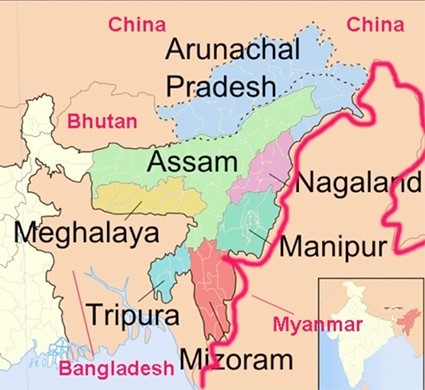





Disclaimer: Copyright infringement not intended.
Context
Background:
Historical Context:
Objectives:
Concerns and Criticisms:
Current Issues:
Security Challenges:
|
The illegal migration of tribal Kuki-Chin peoples into India from Myanmar is one of the key issues in the ongoing Manipur conflict. While the Meiteis have accused these illegal migrants and the alleged “narco-terror network” along the India-Myanmar Border (IMB) of fomenting trouble in the state, the Kukis have blamed the Meiteis and Chief Minister N Biren Singh, a Meitei himself, of using this as a pretext for “ethnic cleansing”. Amid this charged and sensitive debate in the state, questions have been raised about the FMR. Although beneficial to local people and helpful in improving Indo-Myanmar ties, it has been criticised in the past for unintentionally aiding illegal immigration, drug trafficking, and gun running. The border runs through forested and undulating terrain, is almost entirely unfenced, and difficult to monitor. In Manipur, less than 6 km of the border is fenced. Since the military coup in Myanmar on February 1, 2021, the ruling junta has launched a campaign of persecution against the Kuki-Chin peoples. This has pushed large numbers of Myanmarese tribals across the country’s western border into India, especially into Manipur and Mizoram, where they have sought shelter. Mizoram, where a large section of the population has close ethnic and cultural ties with people across the border, has set up camps for more than 40,000 refugees, despite protests from the Union Ministry of Home Affairs. |
Drug Trafficking Statistics:
Suspension and Future Considerations:
Conclusion:
READ: https://www.iasgyan.in/daily-current-affairs/free-movement-regime-fmr
|
PRACTICE QUESTION Q. Examine the implications and challenges of the Free Movement Regime on the India-Myanmar border, highlighting its impact on security and regional dynamics. |







© 2025 iasgyan. All right reserved